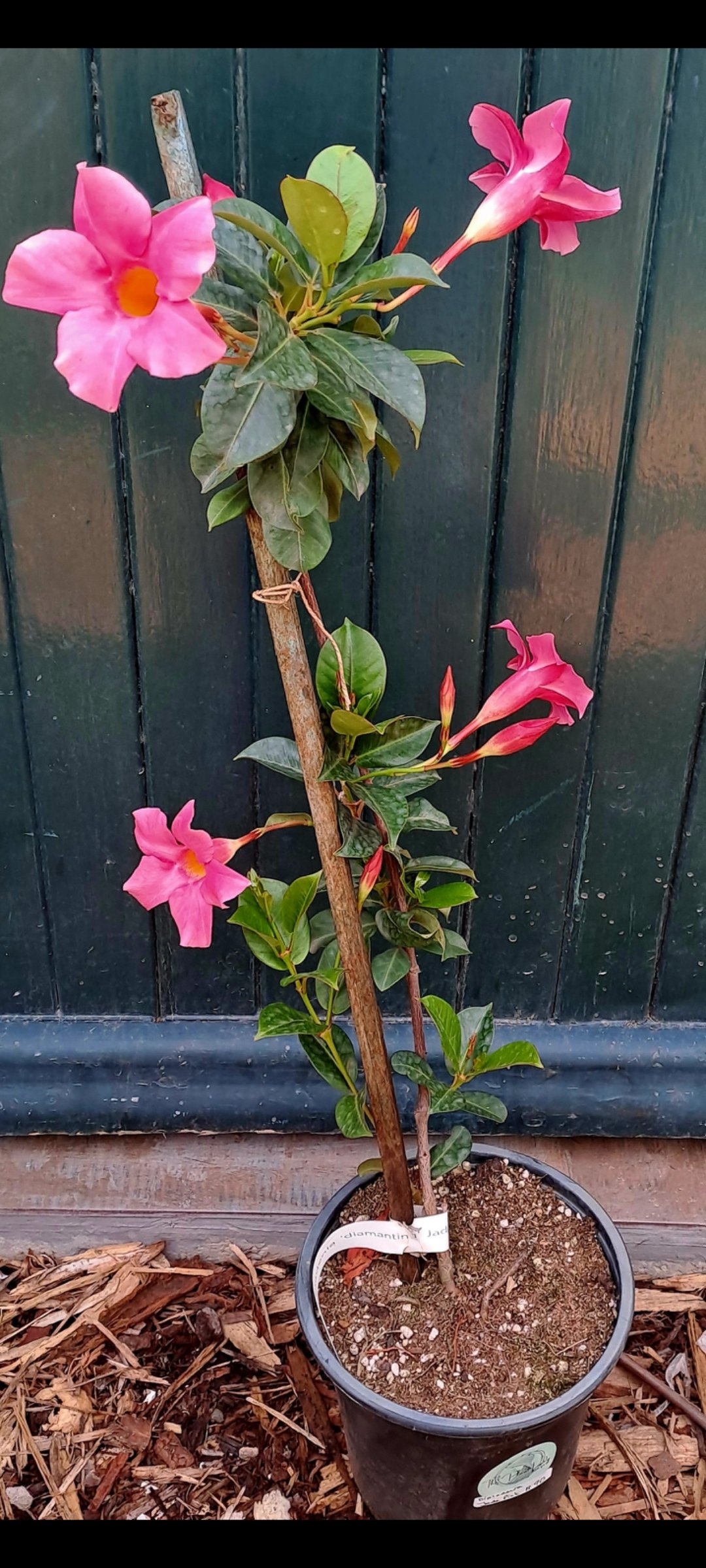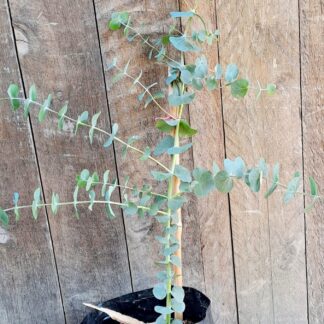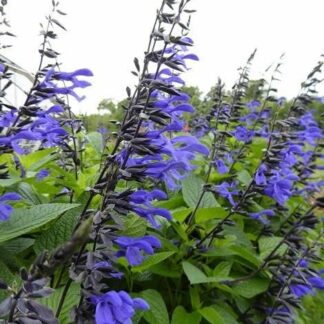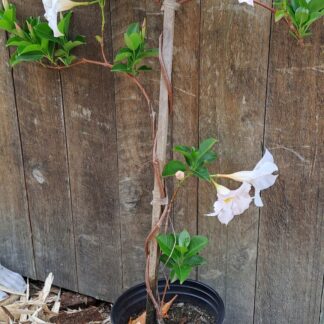Description
Dipladenia, also known as Mandevilla, is a tropical vine appreciated for its colorful, trumpet-shaped flowers.
- Sunlight: Dipladenia thrives in full sun to partial shade. It prefers at least 6 hours of sunlight per day, but protection from intense afternoon sun in hotter climates can help prevent leaf scorching.
- Temperature: Dipladenia is native to warm tropical climates and prefers temperatures between 65°F to 85°F (18°C to 29°C). It can be grown outdoors in USDA hardiness zones 9-11 but should be brought indoors or protected from frost in colder regions.
- Soil: Well-draining soil is essential for Dipladenia to prevent root rot. A mixture of potting soil and perlite or sand works well for container-grown plants. The soil should be rich in organic matter.
- Watering: Keep the soil consistently moist but not waterlogged. Water thoroughly when the top inch of soil feels dry to the touch. Reduce watering in winter when the plant is in its dormant phase.
- Fertilization: Feed Dipladenia with a balanced, water-soluble fertilizer every 2-4 weeks during the growing season (spring to early fall). Reduce fertilizer applications in winter. Follow the instructions on the fertilizer label for application rates.
- Container: If growing Dipladenia in containers, choose a pot with drainage holes to prevent waterlogging. Repot the plant every 1-2 years to refresh the soil and provide room for root growth.
- Support: Provide a trellis, fence, or other support structure for Dipladenia vines to climb. They naturally twine around supports as they grow.
- Pruning: Prune Dipladenia to control its size and shape, promote bushiness, and remove dead or damaged growth. Pruning is best done in early spring before new growth begins.
- Pests and Diseases: Keep an eye out for common pests such as aphids, spider mites, and whiteflies. Dipladenia can also be susceptible to fungal diseases like powdery mildew and botrytis, especially in humid conditions. Treat any pest or disease issues promptly.






Reviews
There are no reviews yet.